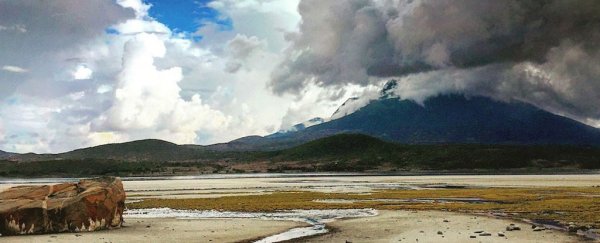British scientists have detected a huge helium field in Africa, after discovering a massive stash of the crucial gas underground in Tanzania.
The find – estimated to be nearly seven times the total amount of helium consumed globally every year – will help allay concerns over Earth's dwindling known supplies of the natural resource, which is crucial for things like MRI scanners, nuclear energy, and detecting industrial leaks.
And best of all, the researchers who discovered the gas field say that their new techniques for helium exploration make further such finds likely.
Earth scientists from Oxford and Durham universities worked together with Norwegian helium exploration company Helium One in the Tanzanian East African Rift Valley. What the team found was that very old helium, trapped in ancient rocks underground, can become released by volcanic activity, which helps transport the gas to shallower gas fields closer to the surface.
"We show that volcanoes in the Rift play an important role in the formation of viable helium reserves," said researcher Diveena Danabalan from Durham University. "Volcanic activity likely provides the heat necessary to release the helium accumulated in ancient crustal rocks."
But while the volcanoes help to free the trapped helium, depending on their proximity to the gas reserves, they can also end up wasting the precious element.
"[I]f gas traps are located too close to a given volcano, they run the risk of helium being heavily diluted by volcanic gases such as carbon dioxide, just as we see in thermal springs from the region," said Danabalan. "We are now working to identify the 'goldilocks-zone' between the ancient crust and the modern volcanoes where the balance between helium release and volcanic dilution is 'just right'."
Based on the team's research, it's thought that the gas the researchers have sampled so far, bubbling near the surface, is part of a much greater whole.
"[I]ndependent experts have calculated a probable resource of 54 Billion Cubic Feet (BCf) (1.5 billion cubic metres) in just one part of the Rift Valley," said Oxford University's Chris Ballentine. "This is enough to fill over 1.2 million medical MRI scanners."
"To put this discovery into perspective," he added, "global consumption of helium is about 8 BCf per year (226 million cubic metres) and the United States Federal Helium Reserve, which is the world's largest supplier, has a current reserve of just 24.2 BCf (685 million cubic metres). Total known reserves in the USA are around 153 BCf (4.3 billion cubic metres)."
But despite the massive potential of the new gas field, even more exciting is that the way we found it.
Before now, helium had always been discovered accidentally, but with what the scientists now understand about volcanoes and helium geochemistry, researchers can now go looking for the gas, meaning Rift Valley could soon be followed by other massive hauls.
"This is around the size of 600,000 Olympic-sized swimming pools with helium gas," said Ballentine. "Now we understand the techniques, we anticipate more large helium finds. This will help safeguard society's future helium needs."
The team's research is being presented this week at the Goldschmidt 2016 geochemistry conference in Yokohama, Japan.
